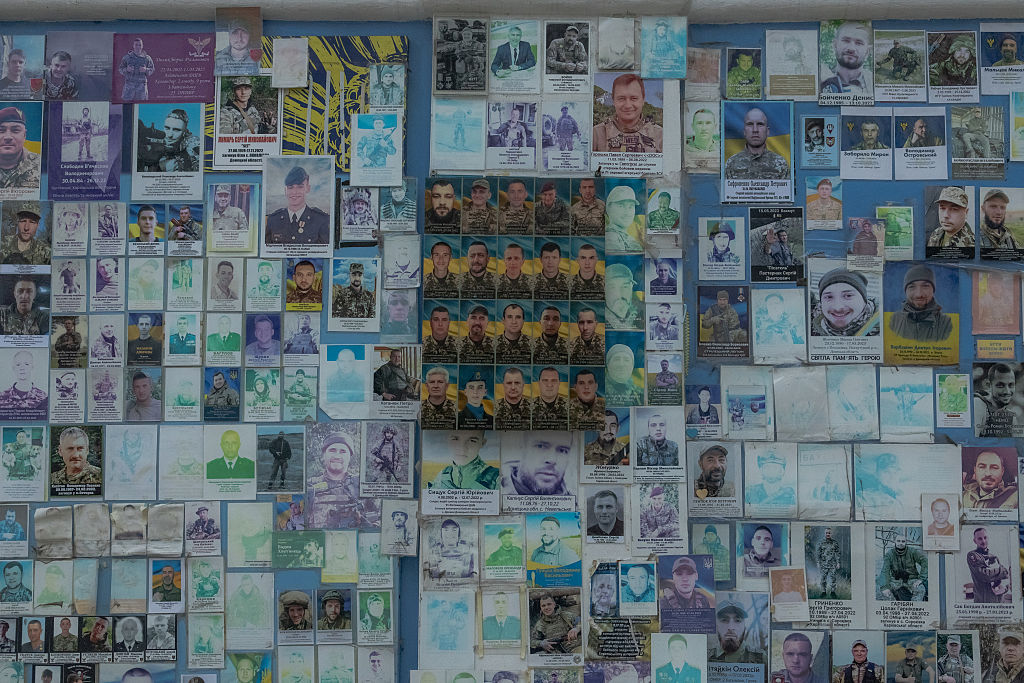The 28-point peace plan for Ukraine, leaked to the press last week, left many wondering about its origins. The document repeated many of the talking points previously voiced by the Kremlin. Even the language of the plan looked to some as if it was translated from Russian. The confusion grew after a group of U.S. lawmakers claimed Secretary of State Marco Rubio said that it was a Russian proposal. Rubio was quick to deny that and insist the plan was an American one, based on “the input from the Russian side.”
[time-brightcove not-tgx=”true”]
Whatever the origins, the plan is a disaster for Ukraine and Europe for several reasons.
First, it would force Ukraine to voluntarily hand over to Russia territory it doesn’t control. That includes some of the most heavily fortified land in Donetsk region, which would make a new Russian assault on Kyiv an easy walk. Ukraine has always insisted that the conflict should be frozen along the current frontlines, and that a ceasefire must be a pre-condition for any further talks.
Second, it severely limits Ukraine’s sovereignty by capping the size of its armed forces to 600,000, and by forcing it to abandon NATO aspirations and enshrine neutrality in its constitution (Ukraine was constitutionally a neutral country before Russia’s invasion of Crimea in 2014). Giving the Russian language and Russian Orthodox Church more rights might seem like innocent provisions, but the Moscow-centered institution would increase the Kremlin’s influence inside Ukraine.
Third, the plan foresees an amnesty for “all parties”—including Russian soldiers, who have committed war crimes and crimes against humanity in Ukraine. Among them are those responsible for a massacre of civilians in Bucha, the bombing of maternity hospitals in Mariupol, the illegal deportation of 19,500 Ukrainian children, and ongoing drone attacks on civilians in Kherson. There is a huge demand for justice inside Ukraine—and this plan does nothing to address it.
Fourth, the plan doesn’t offer any concrete security guarantees for Ukraine and relies heavily on Russia’s goodwill not to invade again. It ignores the fact that Russia has violated numerous international and bilateral commitments since 2014. It rewards and empowers the aggressor by forcing the victim to compromise on issues vital for its survival.
The plan would leave Ukraine—and Europe at large—extremely vulnerable to more, not less, Russian aggression. Nobody in Ukraine trusts Russia—the general consensus is it would use any deal or pause in the fighting to rearm, regroup, and attack again. Russia would also be more tempted to test Europe’s resolve by attacking a E.U. or NATO member, like one of the Baltic states. The German defense chief has already warned NATO to prepare for a possible attack there by 2029.
Fortunately, the pushback has been strong, and there is a new 19-point U.S.-Ukraine plan. Negotiations are expected today between U.S. and Russian officials in Abu Dhabi, as is a meeting between President Volodymyr Zelensky and President Donald Trump later this week. Whatever the outcome, though, all of this must become a wake-up call for Europe.
Over the past year, since Trump returned to office, Europeans understood they needed to do more for their own security. Concrete actions followed, like major commitments to ramp up defense spending levels to 5% of GDP. Europe assumed the role of main buyer of U.S. weapons for Ukraine. Europe has also done commendable work on sustaining Ukraine’s frail financial system and covering most of its civilian budget needs.
Yet Europe’s role in diplomacy around Ukraine has been lacking. Fortunately, Europe offered a counterproposal to Trump’s peace plan, some of which has likely been incorporated into the new U.S.-Ukraine proposal. But the back-and-forth underscores how Europe still largely outsources diplomatic initiative to the U.S. and is forced to do damage control every time Trump’s mood on Ukraine changes (usually after speaking with the Russians). Europe understands the nature of the Russian threat much better, and its leaders have more experience dealing with Putin. What seems to be lacking is confidence—and unity. It is time for Europeans to step up, commit more resources by making the Coalition of the Willing more ambitious, and apply maximum pressure on Russia, for starters, by finally seizing its €210 billion in frozen assets.
Europe—which includes the E.U. and the U.K.—cannot just react when their house is on fire. It is becoming increasingly clear it cannot trust the Trump Administration to bring the war in Ukraine to an outcome which is favorable for Europe. Europe has to show agency and demonstrate it is ready, just like Ukraine, to stand up and fight.

